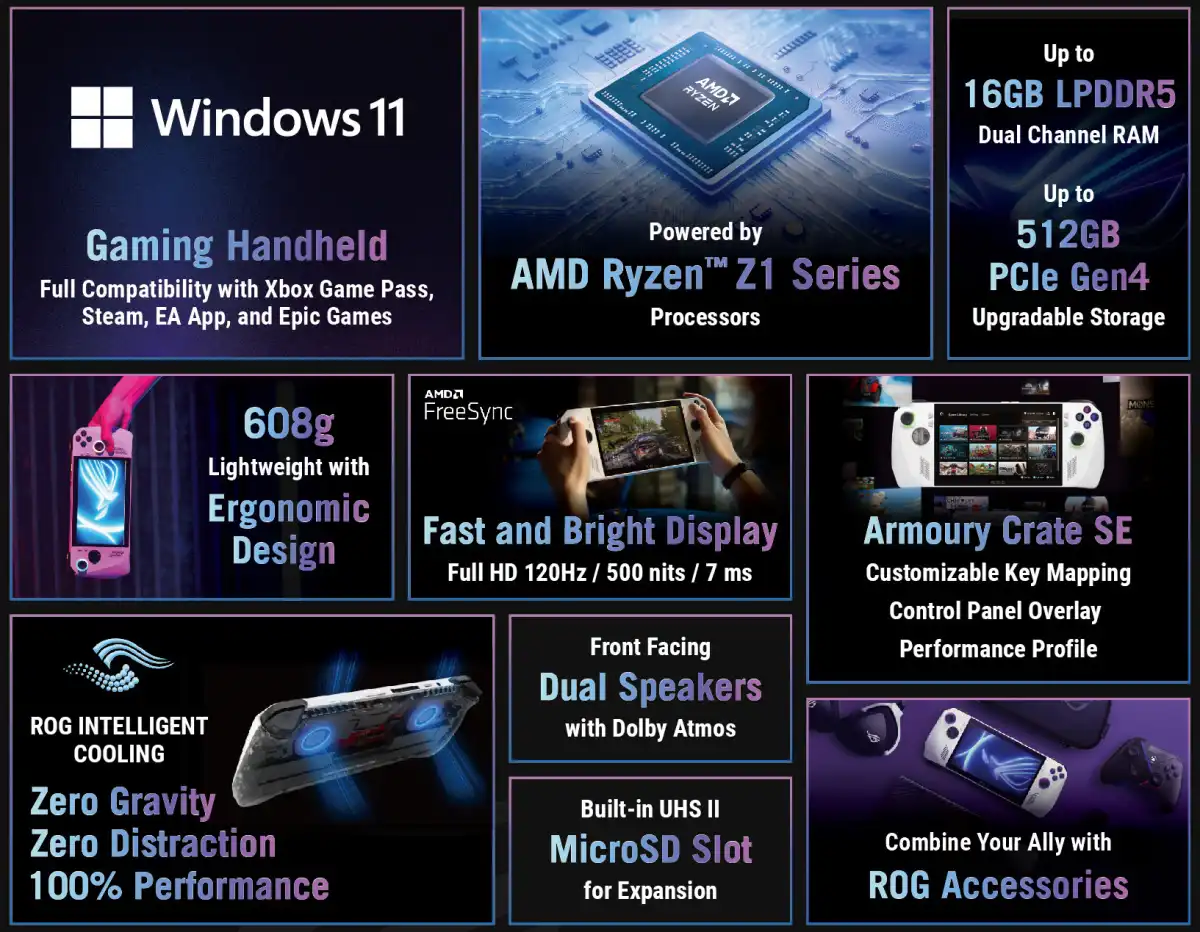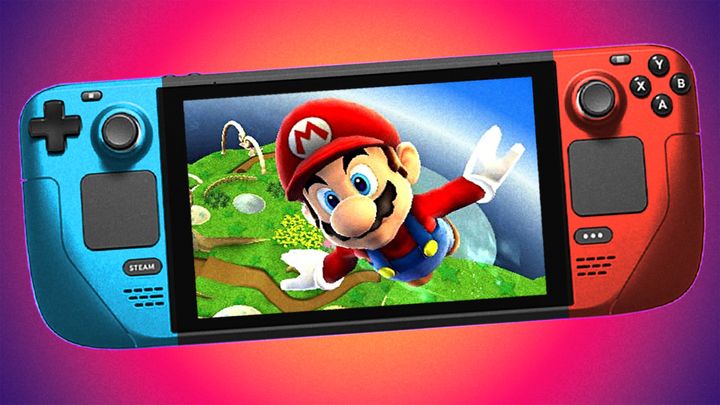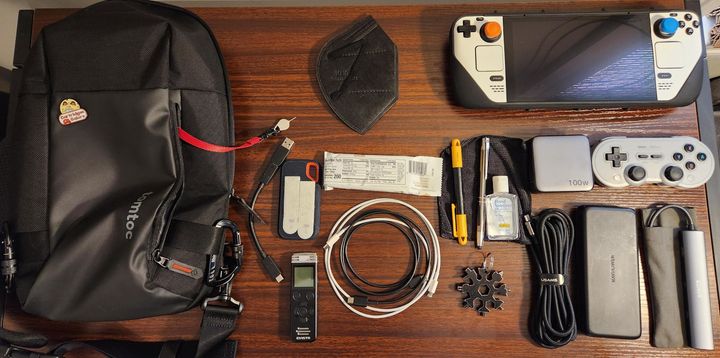The ASUS ROG Ally: A catfish or a game-changer in the handheld gaming market?
ASUS is trying to position the ROG Ally as a Steam Deck killer. But in reality, the Ally will end up helping the Deck more than it will supplant it.

The reviews are in: major tech outlets and big YouTubers like LinusTechTips, Retro Game Core, ETA Prime. And I have to say, and I’m excited to get my hands on the ROG Ally, especially after hearing everything these reviewers have had to say about it.
I am glad the Ally exists. Truly, I am. There’ll be a ton of guthawing in the comments because too many people think I’m a Steam Deck fanboy. (If you want to deride me for anything, let’s have some perspective about it: I’m a Linux zealot). But in all seriousness, I think the Ally is a good thing. Not just for handheld gaming, but also for Valve in particular.
Because we’ve seen what happens when Valve goes unchallenged. For over a decade, they kinda stagnated, right? They rolled out new features for Steam and whatever… but over time Valve just kinda grew sedentary and complacent. They stopped releasing new games. They let PC gaming deteriorate in the Xbox 360 era.
Then Epic came along with the Epic Store and Valve suddenly came back to life. Valve really went through a renaissance of sorts, they released a new Half-life game, they created the Steam Deck… and now there are other new games from them on the horizon.
It was a truly wonderful thing to watch as a Half-life, Portal, and Linux fan. And while there are probably folks who enjoy Epics offerings in this space, the Epic Store is not a real competitor to Steam. Not really.
Steam is a platform that provides an entire ecosystem of software and services for both game developers and players. Epic is a storefront and launcher that only got a shopping cart feature in December of 2021–years after the store became publicly available.
So why am I talking about Epic, here? It’s because I think the Epic Store was a catfish to Valve’s Atlantic cod. The catfish isn’t really a predator of the cod, but placing a catfish in the same tank as cod kept them agile and fresh. That’s the origin of the term “catfish” in the modern sense. And that’s exactly what happened with Valve and Epic.
The Ally is a Catfish
But I think the Ally is a catfish. In the colloquial senses of the word as well as the origin of its modern usage.
The Ally is a catfish because, much like someone who uses social media to pretend to be someone they are not, so too does the Ally.
For example: ASUS wants you to think that the Ally is a 1080p device furthermore, that that bigger number makes it better than the Steam Deck.
But according to all the reviews I’ve seen, that’s simply not the case. Sure, the screen itself is 1080p (and even 120 hz) but most AAA games need to be run at 720p at medium or even low settings unless you’re willing to have a 40 minute battery life or keep it charging at all times. On the flip side, you can get up to 7 hours of battery life from the Steam Deck by adjusting a few options in the Quick Access Menu. You’ll be hard pressed to get even 3 hours of battery life on the lowest TDP settings with the Ally, not to mention there’s no guarantee you won’t have a worse experience at those settings compared to the Deck. That doesn’t sound competitive to me.
I’m not saying it’s a bad thing to have higher specs. We’ll talk about why it’s actually really great for the handheld gaming scene in a minute.
But you might be tempted to ask “well, who really cares about battery life? I’ll just keep it plugged in so I can get the full 120 Hz experience at 1080p.”
Great. Good for you. But I would argue that you’re not the kind of person who’d be happy with the Steam Deck in the first place. If you’re worried about specs over performance, the Deck was never going to impress you. And that’s another reason that the Ally isn’t really a competitor. It’s appealing to a completely different market segment.
See, I’d rather have a consistent 800p 40 FPS with a much longer battery life. In fact, I’m the kind of person who could not care less about numbers at all. I’m more of a “feel” guy. If it feels good to me, you couldn’t pay me to care what the numbers are. And that’s who the Steam Deck is targeting. More of a console gamer than a PC gamer.
And that’s why I found Retro Game Corps’ review of the Ally so telling. In the review, he specifically said “When I turn on 120 Hz mode I cannot tell the difference.” It’s almost as if different form factors have different requirements for framerates, resolutions, and settings.
In many instances at the living room TV or at your desk, 60 FPS should be minimum. But for the average person, running a VR headset at 60 FPS is going to provide an objectively poor experience. It’s even likely to make the average person feel sick. And that’s why 90 FPS is kind of the floor for VR gaming. But on a handheld device with a 7 inch screen, 1080p 60hz is overkill… and even could be undesirable when you have power and thermal limitations to contend with.
When I’m playing a AAA game on my Deck – something like God of War or Spider-man for example – I can’t feel an appreciable difference between 60hz and 40hz mode, except when there’s a framerate mismatch. A stable 40 FPS feels much better to me than an unstable 60. But if I’m playing on my 70” TV, 40 or 50 FPS is going to be excruciating to play.
And this is just one reason why I don’t believe that the Ally is a true competitor to the Steam Deck any more than the Epic Store is a competitor to Steam. However tempting it is to compare spec for spec. The price point, their PC-like nature, etc. it doesn’t matter; they’re just not targeting the use case or playerbase.
It is as absurd to me as when people were calling the Steam Deck a “Switch killer.” The Deck was NEVER going to be a Switch killer, it wasn’t trying to be a Switch Pro. And it’s a misguided, smooth-brained endeavor to even pit the two against each other in the first place. I feel the same way about comparing any handheld PC running Windows to the Steam Deck.
If it’s running Windows, it’s categorically not a competitor. That’s like comparing a PC to a console. It doesn’t make sense.
How the Ally will materially help the Steam Deck 2
We’re still years out from a “Steam Deck 2”. And that’s a good thing. Honestly, new hardware from Valve right now would be harmful to their overall goals with the Steam Deck. And they know it.
The Ally, though, is important. Having a VRR display capable of 120 HZ is great. First because 120 is evenly divisible by 30, 40 and even 60 FPS. So the underclocking of the screen that the Steam Deck does to achieve 40 hz wouldn’t strictly be necessary.
But it also means that there’s an incredibly popular device that comes with a 120 Hz VRR display. Ultimately, that will mean that a power efficient driver will become available for Linux and that VRR support will gain more wide-spread use across Linux distributions. And let’s be honest: as it stands right now, VRR could use some improvement in the Linux space.
So I suspect that Linux devs and distro maintainers will be adding the code needed to make VRR “just work” (and, as seems to be the Linux way) we’ll probably end up with an impressively awesome implementation, especially when compared to Windows.
Then, Valve can release the Steam Deck 2 with a VRR screen that’s truly game-changing.
The same will hold true for the other hardware that the Ally comes with. I don’t know what the state of Zen 4, Z1 or Z1 Extreme looks like in the Linux kernel. But as it matures, the next iterations of the kernel should yield incredible performance on Linux and will provide an excellent base for any potential Deck sequel.
The Ally provides an incentive for Linux engineers and enthusiasts alike to optimize drivers for the device and it’s only a matter of time before the Ally will see better performance and hardware support on our favorite penguin-flavored OS than Windows 11.
In the meantime…
The question is: what can (or even what should) Valve do to not get totally lost in the hype surrounding the Ally?
Well, the simplest answer, I think, is Software updates. Lots of them. Software is the Deck’s secret sauce. Especially Linux. As I mentioned earlier, Valve’s got complete control over the Deck from firmware, to drivers, to the API environment. They keep adding awesome features and they’ll always have a leg up.
All this means that they can squeeze more performance out of the silicon. Three years from now when the Ally 3 is making its debut, Windows 11 will have grown ever-more bloated and today’s hardware will be starting to “show its age.”
And while the Deck 2 may have premiered by then, today’s Deck will still be as performant as always with the exception of the latest and greatest games… that is unless Valve takes my next recommendation to heart:
We need a new Deck Verified tier. They can call it “Certified,” they could call it “Platinum,” they could call it whatever. But it should do most of the following:
- Valve needs to define an API that lets Steam modify a games settings (such as display resolution, graphics settings, music volume, key bindings, etc) and Platinum games need to support 100% of this API
- Platinum games need to not only be playable on Steam Deck, but specifically optimized for the hardware. In particular, the developers should have a performance profile that is automatically configured when launching the game as well as provide recommended graphical settings that are automatically applied.
- Platinum games should strip out unnecessarily high-resolution assets that will never be used on Deck in order to save disk space. There should be an option in the game’s Steam settings to switch to the regular PC assets.
- Platinum games need to go through a stringent certification process that mirrors what Xbox, PlayStation, and (to a lesser extent) Switch games go through. Stability, playability, UI, and accessibility testing at a minimum.
Getting “Platinum” status should be entirely optional for developers, but there should be incentives for devs to go for it. “Platinum” games should get a priority spot on the Steam Store on Deck. And they could have a different revenue split for games that are rated “Platinum” (for example: instead of Valve taking 30%, they would take a smaller cut).
Finally, Valve could lower the price of each Steam Deck model. Perhaps they could also roll out a 1TB version that lives at the highest-end tier.
But those are just my thoughts. I’d love to hear yours. Leave me a comment and let me know!




Comments ()